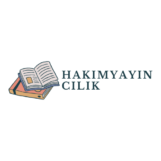Writing nonfiction can be an incredibly rewarding journey. It allows me to explore real-life stories, share knowledge, and connect with readers in meaningful ways. Whether I’m delving into history, personal memoirs, or how-to guides, the essence of nonfiction lies in its authenticity and the power of truth.
In a world overflowing with information, crafting compelling nonfiction is both an art and a skill. I’ve learned that clarity and engagement are key to capturing my audience’s attention. It’s not just about presenting facts; it’s about weaving them into narratives that resonate. Join me as I share insights and tips on how to elevate your nonfiction writing and make your voice heard.
Key Takeaways
- Nonfiction’s Essence: Writing nonfiction centers around authenticity and truth, conveying real-life stories and factual information that connect with readers on a deeper level.
- Types of Nonfiction: Familiarize yourself with various nonfiction categories like biographies, essays, journalism, and self-help, as each serves distinct purposes and audience needs.
- Importance of Research: Effective research is crucial for accuracy and credibility, requiring the use of reliable sources and proper citation to strengthen your narrative.
- Engagement Strategies: Capturing audience attention involves using hooks, vivid descriptions, and relatable anecdotes while maintaining a conversational tone to enhance connection.
- Effective Structure: Organize your writing with outlines, clear headings, and smooth transitions to ensure clarity and flow, making content easily navigable for readers.
- Editing and Revising: Take the editing process seriously by reviewing structure, factual accuracy, and clarity, while avoiding common pitfalls such as neglecting feedback and rushing through revisions.
Writing Nonfiction
Writing nonfiction involves conveying factual information and real-life stories in an engaging manner. This genre connects deeply with readers, providing insights into the world around them.
What Is Nonfiction?
Nonfiction refers to writing that presents real events, people, and facts. This genre aims to inform, educate, or entertain while adhering to the truth. Examples of nonfiction include biographies, essays, journalism, and self-help books. Each piece captures reality, ensuring accuracy remains a priority.
Types of Nonfiction Writing
Multiple categories exist within nonfiction. Each serves a unique purpose and audience:
- Biography: Chronicles an individual’s life, detailing experiences and achievements.
- Memoir: Focuses on personal reflections and experiences, emphasizing emotional truth.
- Essay: Explores specific subjects, blending opinion with factual information.
- Journalism: Reports current events, providing analysis and commentary based on research.
- Self-Help: Offers guidance and strategies for personal growth and improvement.
- Travel Writing: Shares experiences and observations about places, cultures, and people encountered during journeys.
- Historical Writing: Examines past events, using evidence to narrate history accurately.
Understanding these types enhances effectiveness in communicating knowledge and stories within the nonfiction realm.
The Importance of Research in Nonfiction
Research forms the backbone of nonfiction writing, ensuring accuracy and depth. By grounding my work in reliable information, I create a strong foundation for my narratives, making them more credible and engaging.
Conducting Effective Research
Conducting effective research involves several steps. First, I identify credible sources. Academic journals, books, and reputable websites provide reliable information. Next, I gather data relevant to my topic. I focus on statistics, facts, and expert opinions that support my arguments or narratives.
After collecting information, I evaluate its reliability. Peer-reviewed articles and established authors hold greater weight in my writing. Organizing the gathered information helps in accessing it easily during the writing process. I often use digital tools, such as citation managers or spreadsheets, to streamline my research.
Citing Sources Appropriately
Citing sources appropriately is crucial for maintaining credibility. I adhere to established citation styles, such as APA, MLA, or Chicago, depending on my audience’s expectations. Each citation style has specific formatting rules that ensure clarity and uniformity.
Incorporating in-text citations whenever I reference someone else’s work prevents plagiarism. Listing all sources in a bibliography or works cited section allows readers to verify my claims and explore further. Understanding the importance of proper citations not only strengthens my arguments but also demonstrates my commitment to ethical writing practices.
Crafting a Compelling Narrative
Crafting a compelling narrative in nonfiction involves engaging your audience and structuring your work effectively. These elements enhance the overall impact and clarity of your writing.
Engaging Your Audience
Engaging an audience requires a clear understanding of their interests and needs. I focus on the following strategies:
- Start with a Hook: An intriguing opening grabs attention. Use a powerful quote, a thought-provoking question, or a surprising fact.
- Use Vivid Descriptions: Engaging writing involves painting a picture with words. Incorporate sensory details and specific examples to bring scenes to life.
- Ask Questions: Directly addressing readers with questions encourages them to think and connect with the content.
- Personalize the Experience: Share anecdotes that resonate with your audience. Relatable stories create a deeper connection.
- Maintain a Conversational Tone: Using informal language helps bridge the gap between the writer and the reader, making the content feel accessible.
Structuring Your Work
Organizing my nonfiction writing enhances clarity and flow. I adhere to these structural guidelines:
- Create an Outline: Outlining provides a roadmap for the narrative. It helps to organize thoughts and ensures that ideas transition smoothly.
- Use Clear Headings: Incorporating headings and subheadings aids navigation. Readers can quickly find specific topics of interest.
- Employ the “Inverted Pyramid” Style: Presenting the most critical information first captures interest. This method allows readers to grasp key points even if they skim.
- Include Transitions: Smooth transitions between sections enhance coherence. Use transitional phrases to guide readers through the narrative logically.
- Conclude with Impact: A strong conclusion reinforces key messages. Recap the main points and provide a call to action or reflection for readers.
By focusing on audience engagement and structured organization, nonfiction writing transforms into a powerful medium that resonates and informs.
Editing and Revising Nonfiction
Editing and revising nonfiction is crucial for enhancing clarity, coherence, and overall quality. This phase ensures the final piece is polished and resonates with the audience.
The Editing Process
The editing process involves multiple stages. First, I review the overall structure, focusing on the flow of ideas and ensuring each section transitions smoothly. Second, I examine the content for clarity and conciseness, eliminating unnecessary words or redundancies. Third, I check for factual accuracy, verifying all statements and data against credible sources. Fourth, I refine language and style, enhancing tone and vocabulary to match the target audience. Lastly, I proofread for grammar, punctuation, and formatting errors to achieve a professional finish.
Common Pitfalls to Avoid
Avoiding common pitfalls enhances the editing process. Here are key pitfalls to be mindful of:
- Neglecting Structure: Skipping structural reviews can lead to disorganized content that confuses readers.
- Overlooking Consistency: Inconsistencies in voice, tense, or terminology can undermine credibility and reader trust.
- Ignoring Feedback: Disregarding feedback from beta readers or editors can prevent valuable improvements.
- Rushing the Process: Hurrying through editing often leads to missed errors or unclear expressions.
- Focusing Solely on Typos: Worrying only about surface mistakes can leave deeper issues unaddressed.
By recognizing and avoiding these pitfalls, I strengthen the quality of nonfiction writing and ensure it effectively communicates its message.
Real Stories
Writing nonfiction is a journey that allows me to share real stories and insights with the world. It’s about authenticity and the commitment to truth that can deeply resonate with readers. By focusing on clarity and engagement, I can transform facts into compelling narratives that inform and inspire.
The process doesn’t stop at writing. Research and careful editing are crucial to ensuring my work stands out and maintains credibility. Each step I take enhances my ability to connect with my audience and convey meaningful messages. Embracing these elements not only elevates my writing but also enriches the reader’s experience. So I encourage you to embrace the challenges of nonfiction writing and let your voice shine through.

